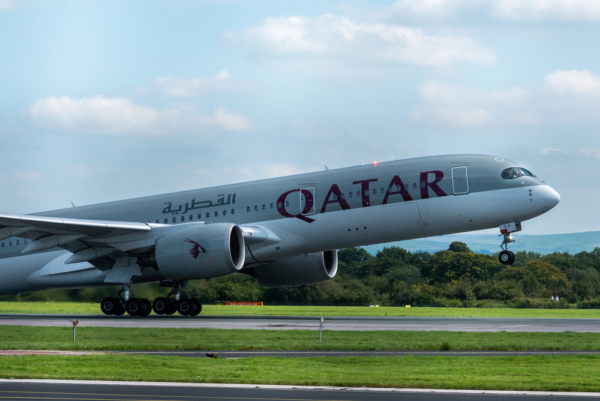
As aircraft, satellites, and unmanned aerial vehicles (UAVs) increasingly find themselves in highly complex environments like congested airspaces, contested regions, and even outer space, AI-driven navigation systems have the potential to make safe, automatic flight possible. These systems use machine learning (ML), data analytics, and advanced sensor integration; and they are the future of aerospace operations. For any aerospace manufacturing company, AI, IoT, and cybersecurity can deliver solutions that boost efficiency, safeguard assets, and drive profitability.
The Future of Aerospace Manufacturing and Operations
Precision and Accuracy in Dynamic Environments
Navigation in the world of aerospace demands pinpoint accuracy. It doesn’t matter if you’re guiding a commercial jet through turbulent weather or directing a satellite to maintain its orbit: that accuracy means everything. The January 2025 crash in Washington D.C. between a commercial jet and a Black Hawk helicopter was a great example of how traditional navigation systems, reliant on pre-programmed routes and static data, often struggle to adapt to real-time changes. Whatever other factors were in play, one thing we do know is that the copter and tower had very different altitude numbers.
AI-driven navigation systems overcome these limitations by processing vast amounts of data from multiple sources. They instantly gather from GPS, inertial navigation systems (INS), radar, and even visual sensors, and, using machine learning algorithms, analyze patterns, predict anomalies, and adjust trajectories with precision. A cargo plane encountering unexpected wind shear could see its AI-powered navigation system instantly recalculate the optimal flight path, factoring in wind speed, fuel efficiency, and safety margins. Similarly, a military UAV operating in a GPS-denied zone could rely on AI to fuse data from onboard cameras and INS so it could maintain course despite jamming attempts.
Real-Time Decisions
AI-driven navigation systems continuously monitor environmental conditions, equipment status, and potential hazards. This allows them to respond faster than human operators ever could. And when IoT sensors are integrated with AI analytics, navigation platforms can detect threats like bird strikes, icing conditions, or equipment malfunctions quickly and recommend corrective actions instantly.
Say a passenger jet approaching busy airspace faces sudden congestion: an AI system could analyze the air traffic data, weather forecasts, and runway availability, propose an alternative approach, or suggest a holding pattern that avoids delays or collisions; all in the blink of an eye. In defence scenarios, an AI-driven fighter jet could autonomously adjust its altitude and speed to evade a detected missile while maintaining its mission objective
Optimizing Efficiency and Reducing Costs
Fuel costs, maintenance schedules, and operational downtime all have a huge impact on profitability, and sometimes there’s little that can be done to bring these costs down manually. But AI-driven navigation systems can optimize all these factors. They can, for instance, predict and adapt to variables that traditional systems overlook and thus forecast optimal flight routes based on weather patterns, air traffic trends, and aircraft performance history. Ultimately, the result is both lowered fuel consumption and less wear and tear.
For a satellite operator managing a constellation, an AI navigation system on each satellite could adjust that satellite’s orbit as needed to avoid space debris, minimize energy use, and extend the lifespan of all the onboard systems. On the ground, manufacturers producing aerospace components can use AI to streamline testing and validation, accelerate production timelines, and cut costs across the board.
Powering Visibility with Integrated Data Systems
AI excels at grabbing and then bringing together data from a variety of sources into one, cohesive, actionable picture. By integrating sensors like LIDAR, radar, and thermal imaging, and applying automation, these systems provide aerospace operators with a 360-degree view of their environment so that, even in the most difficult scenarios, like urban air mobility (UAM) operations, it’s possible to navigate from a place of knowledge and make decisions based on what’s really going on around you.
In a futuristic airspace, an AI system could be used to guide a fleet of delivery drones so they avoid obstacles, comply with no-fly zones, and coordinate with all other aerial traffic. The key here is the system’s incredible ability to process real-time data from ground-based sensors, weather stations, and vehicle-to-vehicle communications all at once, allowing for control and flexibility.
Accelerating Product Excellence Through R&D
The development of AI-driven navigation systems is still ongoing, and research and development (R&D) are vitally important. Cutting-edge tools like hardware-in-the-loop (HIL) testing and simulators allow engineers to validate AI algorithms in virtual environments. This lets you see how they’re actually going to behave once deployed, meaning that errors, kinks, and hiccups can all be dealt with safely and faster than when real-world testing is your only option.
When your aerospace lab can simulate a UAV’s navigation system using HIL, engineers can test, for example, exactly how the system will respond to simulated turbulence or signal loss. The system can then be refined until it achieves near-zero defects.
Defending Trust with Cybersecurity Integration
As AI-driven navigation systems become more connected to IoT networks and cloud-based analytics, cybersecurity only becomes more of a concern, and rightly so. Any breach in these systems could not just disrupt operations but expose sensitive data and greatly compromise safety. To counter these risks, AI navigation platforms already incorporate zero-trust authentication so that every device, user, and data exchange is verified before access is granted. This is just one way the system is built from the ground up to defend critical infrastructure against the growing sophistication of cyber threats.
A satellite transmitting navigation data to a ground station, for instance, could use AI to detect and block unauthorized access attempts, while encryption secures the data stream generally. This is essential for more than military applications: imagine the chaos if a bad actor were able to take control of the navigation systems of commercial airliners.
Reach out to SAAB RDS today to learn more about what AI navigation systems can do.
